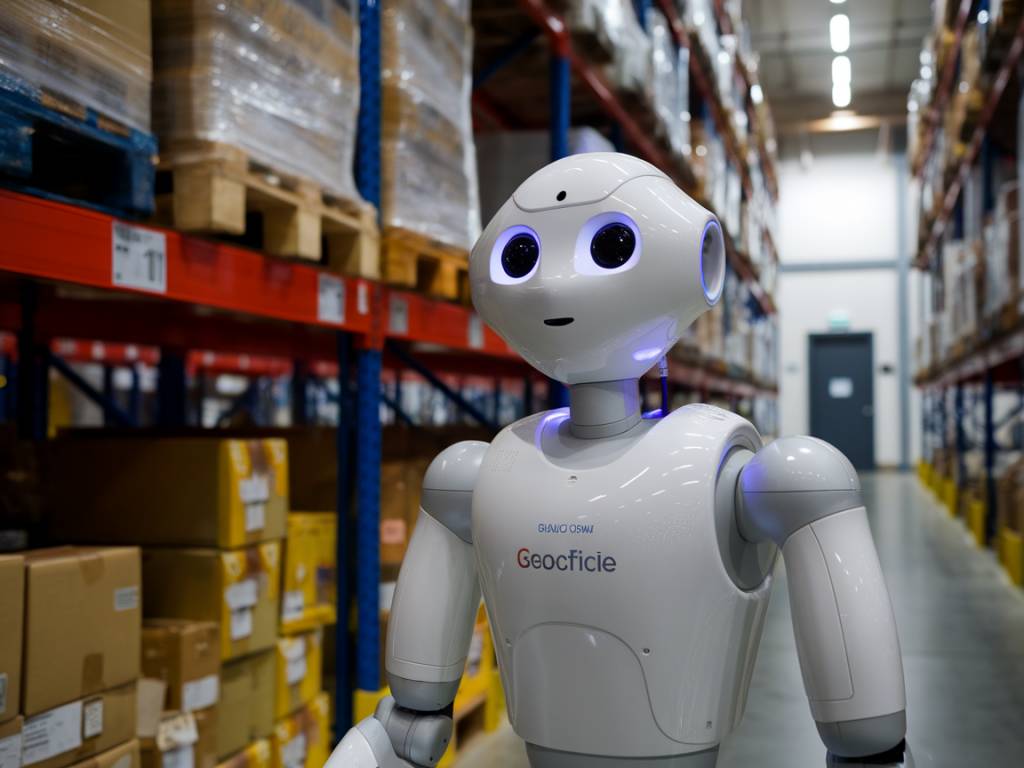In the fast-paced world of logistics and packaging, retailers and manufacturers consistently strive for operational excellence. One of the latest advancements in this sector is the deployment of AI-powered robots for optimizing inventory management. These intelligent machines are revolutionizing how warehouses operate, bringing about significant improvements in efficiency, accuracy, and cost reduction. In this article, we’ll explore the various ways AI-powered robots are transforming inventory management, the benefits they offer, and how they’re shaping the future of warehousing and logistics.
Enhanced Inventory Tracking and Accuracy
Inventory tracking has always been a critical but challenging aspect of warehousing. Traditional methods relying on manual entries are prone to human errors, often leading to discrepancies between recorded and actual stock levels. AI-powered robots equipped with advanced vision systems and AI algorithms can drastically reduce these errors. They conduct real-time inventory counts, tracking each item’s location, quantity, and status with exceptional accuracy.
These robots utilize machine learning to continuously improve their tracking capabilities. They analyze historical data and trends to predict inventory needs and adjust stocking levels dynamically. This ensures an optimal match between supply and demand, ultimately reducing overstock and stockouts.
Streamlined Warehouse Operations
The integration of AI-powered robots into warehouse operations significantly streamlines various processes. These robots can autonomously navigate warehouse aisles, picking and placing items efficiently. Equipped with sophisticated sensors and algorithms, they can meticulously plan the shortest and safest routes to move goods, thereby optimizing space utilization.
Furthermore, AI-powered robots handle repetitive and physically demanding tasks, freeing human workers to focus on more complex and strategic activities. This not only enhances productivity but also reduces the risk of workplace injuries.
Improved Demand Forecasting
Accurate demand forecasting is essential for maintaining optimal inventory levels. AI-powered robots leverage vast datasets, encompassing historical sales data, market trends, seasonal variations, and even social media cues to predict future demand. Their predictive analytics capabilities enable businesses to make informed decisions about inventory replenishment and allocation.
By aligning inventory levels with anticipated demand, companies can minimize excess stock while ensuring that popular items remain readily available. This balance is crucial for maintaining customer satisfaction and optimizing cash flow.
Enhanced Supply Chain Visibility
Incorporating AI-powered robots in inventory management provides real-time visibility into the supply chain. These robots constantly monitor stock levels, supply chain movements, and potential disruptions. They can identify bottlenecks and inefficiencies, enabling proactive measures to mitigate risks.
This heightened visibility extends beyond the warehouse, as AI-powered systems integrate with broader supply chain networks. Companies can track inventory from supplier to end customer, ensuring a seamless flow of goods and mitigating delays or losses.
Cost Efficiency
While the initial investment in AI-powered robots may seem substantial, the long-term cost benefits are significant. Automation reduces labor costs, as fewer human workers are needed for manual inventory tasks. Additionally, the precision and efficiency of AI-powered robots minimize wastage, reduce errors, and lower operational costs.
Energy efficiency is another advantage. Modern AI-powered robots are designed to consume less power compared to older automated systems. As energy costs continue to rise, this aspect contributes significantly to overall cost savings.
Scalability and Flexibility
One of the standout features of AI-powered robots is their scalability and flexibility. Whether a business is a small startup or a giant enterprise, these robots can be scaled to match operational needs. As demand fluctuates, companies can easily adjust the number of active robots without massive overhauls or disruptions.
This adaptability extends to various types of inventory as well. AI-powered robots can handle different sizes, shapes, and types of products, from tiny electronic components to large, bulky items, making them suitable for diverse industries.
Advanced Security Features
Maintaining inventory security is critical, and AI-powered robots significantly enhance this aspect. Equipped with real-time monitoring and alert systems, these robots can detect unauthorized access or suspicious activities within the warehouse. They can also integrate with existing security systems to provide a comprehensive security solution.
Moreover, AI algorithms can analyze patterns to detect potential internal and external threats, allowing companies to implement preventative measures swiftly.
Data-Driven Decision Making
The data gathered and analyzed by AI-powered robots is invaluable for informed decision-making. From daily operations to long-term strategic planning, this data helps managers identify trends, predict future challenges, and discover new opportunities for improvement.
Robust reporting features provide insights into inventory turnover rates, storage inefficiencies, and delivery performance, enabling continuous improvement and competitiveness in the market.
Real-World Examples of AI-Powered Robots in Inventory Management
Numerous companies have already begun reaping the benefits of AI-powered robots in their inventory management processes. For instance, Amazon’s fulfillment centers utilize thousands of AI-enabled robots to manage stock, pick orders, and streamline logistics. These robots have enabled Amazon to achieve unprecedented efficiency levels and meet the high demands of global e-commerce.
Similarly, Walmart employs AI-powered robots for accurate shelf scanning, ensuring products are correctly stocked and priced. This reduces the workload on human staff and enhances the overall shopping experience for customers.
Preparing for Future Innovations
The role of AI-powered robots in optimizing inventory management is bound to expand. As technology continues to advance, we can expect these robots to become even more sophisticated, offering higher levels of automation and intelligence. Future innovations may include enhanced machine learning algorithms, greater adaptability, and improved integration with other advanced technologies such as blockchain and IoT.
Businesses that adopt these innovations early will gain a competitive edge, enjoying streamlined operations, better inventory control, and superior customer satisfaction.
By understanding and embracing the capabilities of AI-powered robots, companies can transform their inventory management systems, achieving new heights of efficiency, accuracy, and overall performance. In an increasingly competitive market, these advancements are not just beneficial; they are essential for staying ahead and meeting the dynamic demands of consumers.

